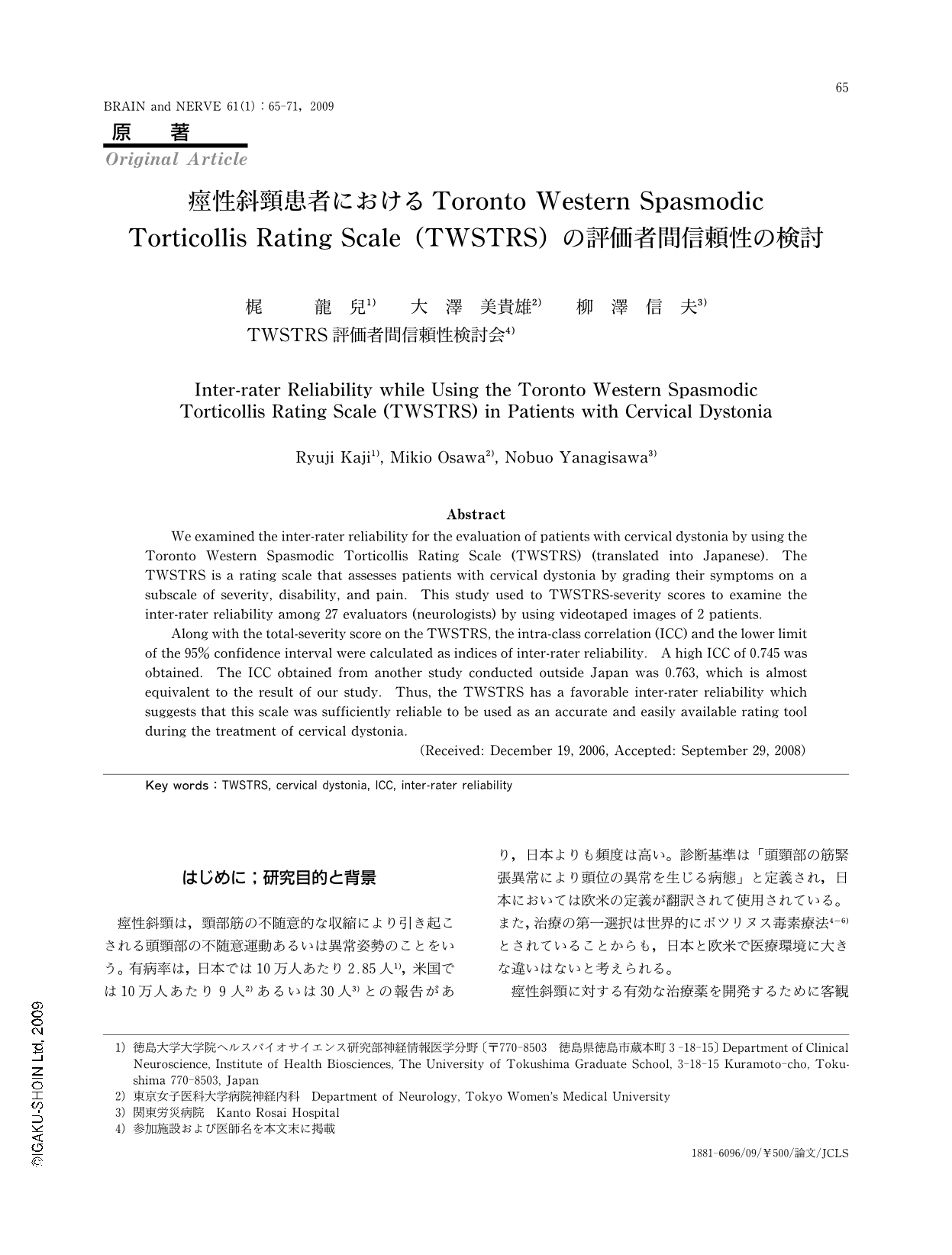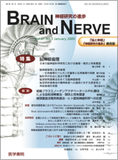Japanese
English
- 有料閲覧
- Abstract 文献概要
- 1ページ目 Look Inside
- 参考文献 Reference
はじめに;研究目的と背景
痙性斜頸は,頸部筋の不随意的な収縮により引き起こされる頭頸部の不随意運動あるいは異常姿勢のことをいう。有病率は,日本では10万人あたり2.85人1),米国では10万人あたり9人2)あるいは30人3)との報告があり,日本よりも頻度は高い。診断基準は「頭頸部の筋緊張異常により頭位の異常を生じる病態」と定義され,日本においては欧米の定義が翻訳されて使用されている。また,治療の第一選択は世界的にボツリヌス毒素療法4-6)とされていることからも,日本と欧米で医療環境に大きな違いはないと考えられる。
痙性斜頸に対する有効な治療薬を開発するために客観的な評価尺度を用いることが重要になっている。痙性斜頸治療の評価尺度として,海外ではToronto Western Spasmodic Torticollis Rating Scale(TWSTRS)7)が治療効果の評価に用いられている。一般に,海外で作成された評価尺度を本邦で使用する場合,日本語への正確な翻訳が必須となるが,原著の意味を忠実に再現する訳語を当てはめることはしばしば困難である。したがって,使用する評価尺度によっては,例えば地域特有の質問などが含まれる場合には,事前にその日本語版の信頼性や妥当性を評価しておくことが重要である。
TWSTRS7)は1994年にConskiとLangによって開発された評価尺度であり,重症度,機能障害度および疼痛度を評価する3つの下位尺度から構成されている。このうち重症度スケールにおける信頼性および妥当性が報告されている。重症度スケールは本尺度の主要な構成要素であり,頭位偏倚の角度や偏倚の持続時間を評価するために用いられる。すなわち海外や日本とで共通した概念である「角度」や「時間」を評価の基準としているため,測定者間における評価の不一致などは少ないと考えられる。しかしながら,本邦では本尺度の使用経験がないためこれを裏付ける十分なデータは得られていない。そこで,米国において詳細な評価者訓練マニュアルが提示されているTWSTRS-重症度スケールについて,本邦における評価者間一致性を検討した。
Abstract
We examined the inter-rater reliability for the evaluation of patients with cervical dystonia by using the Toronto Western Spasmodic Torticollis Rating Scale (TWSTRS) (translated into Japanese). The TWSTRS is a rating scale that assesses patients with cervical dystonia by grading their symptoms on a subscale of severity, disability, and pain. This study used to TWSTRS-severity scores to examine the inter-rater reliability among 27 evaluators (neurologists) by using videotaped images of 2 patients.
Along with the total-severity score on the TWSTRS, the intra-class correlation (ICC) and the lower limit of the 95% confidence interval were calculated as indices of inter-rater reliability. A high ICC of 0.745 was obtained. The ICC obtained from another study conducted outside Japan was 0.763, which is almost equivalent to the result of our study. Thus, the TWSTRS has a favorable inter-rater reliability which suggests that this scale was sufficiently reliable to be used as an accurate and easily available rating tool during the treatment of cervical dystonia.
(Received: December 19,2006,Accepted: September 29,2008)

Copyright © 2009, Igaku-Shoin Ltd. All rights reserved.


